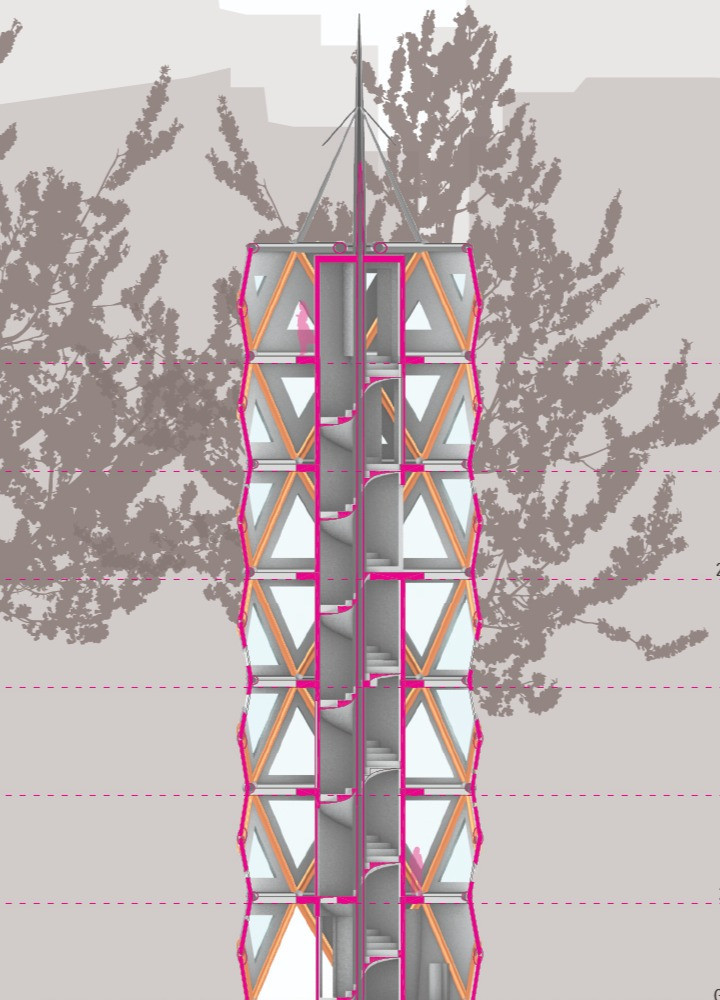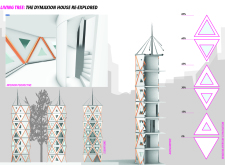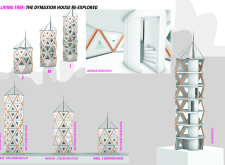5 key facts about this project
The Living Tree architectural design presents an innovative approach to affordable housing in London. It reflects a thoughtful balance between ecological considerations and the need for social spaces. The overall design draws inspiration from geodesic structures associated with Buckminster Fuller’s Dymaxion House. This project emphasizes modularity and efficient use of land while promoting a close relationship with nature.
Concept and Structure
The main idea of the Living Tree is to create small housing units that fit into the existing green areas in London. The design takes a siteless approach, allowing the project to utilize available land without the need to demolish existing buildings. The tall, slender shapes of the units resemble trees, allowing them to blend into their environment while maximizing the use of limited urban space.
Materials and Construction
A systematic panelization approach is key to this project. The units are constructed using composite panels that include thermopolyolefin, plywood, and recycled cotton insulation fiber. These materials are chosen for their lightweight properties and ease of assembly. The geometric efficiency of triangular shapes enhances the overall stability of the structure while providing an aesthetic that mimics the forms found in nature.
Spatial Dynamics and Community Engagement
The design prioritizes natural light and ventilation, creating inviting spaces within the units. The arrangement of the buildings encourages interaction with the outdoors and fosters a sense of community among residents. Shared green areas provide opportunities for social engagement, enhancing the living experience and promoting a lifestyle that is connected to nature.
A notable aspect of the Living Tree is its adaptability to different site conditions. Each unit’s design is flexible enough to allow for placement among existing trees and green spaces. This approach not only highlights an inventive architectural vision, but also establishes a meaningful connection to the ecological context, encouraging residents to appreciate their surroundings.






















































